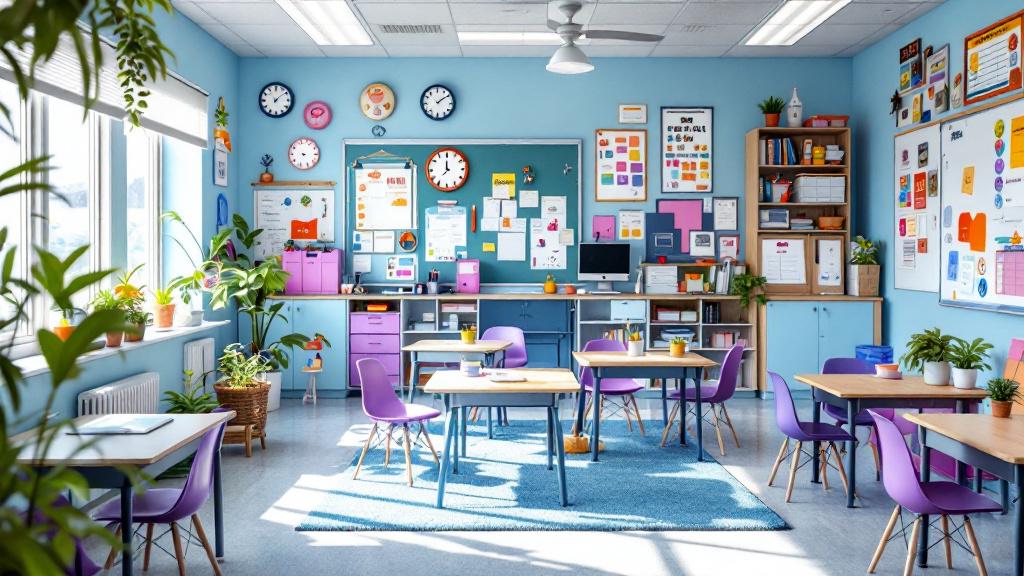Enhancing Support for Children with Autism Through ABA
Applied Behavior Analysis (ABA) has emerged as a cornerstone in supporting children with autism spectrum disorder (ASD) within inclusive classrooms. Its evidence-based strategies foster social, communication, and behavioral development, enabling students to thrive academically and socially alongside their peers. This article explores how ABA therapy can be effectively integrated into educational settings, highlighting its benefits, methods, and the positive outcomes it can achieve for children with autism.
Personalized Interventions and Data-Driven Support
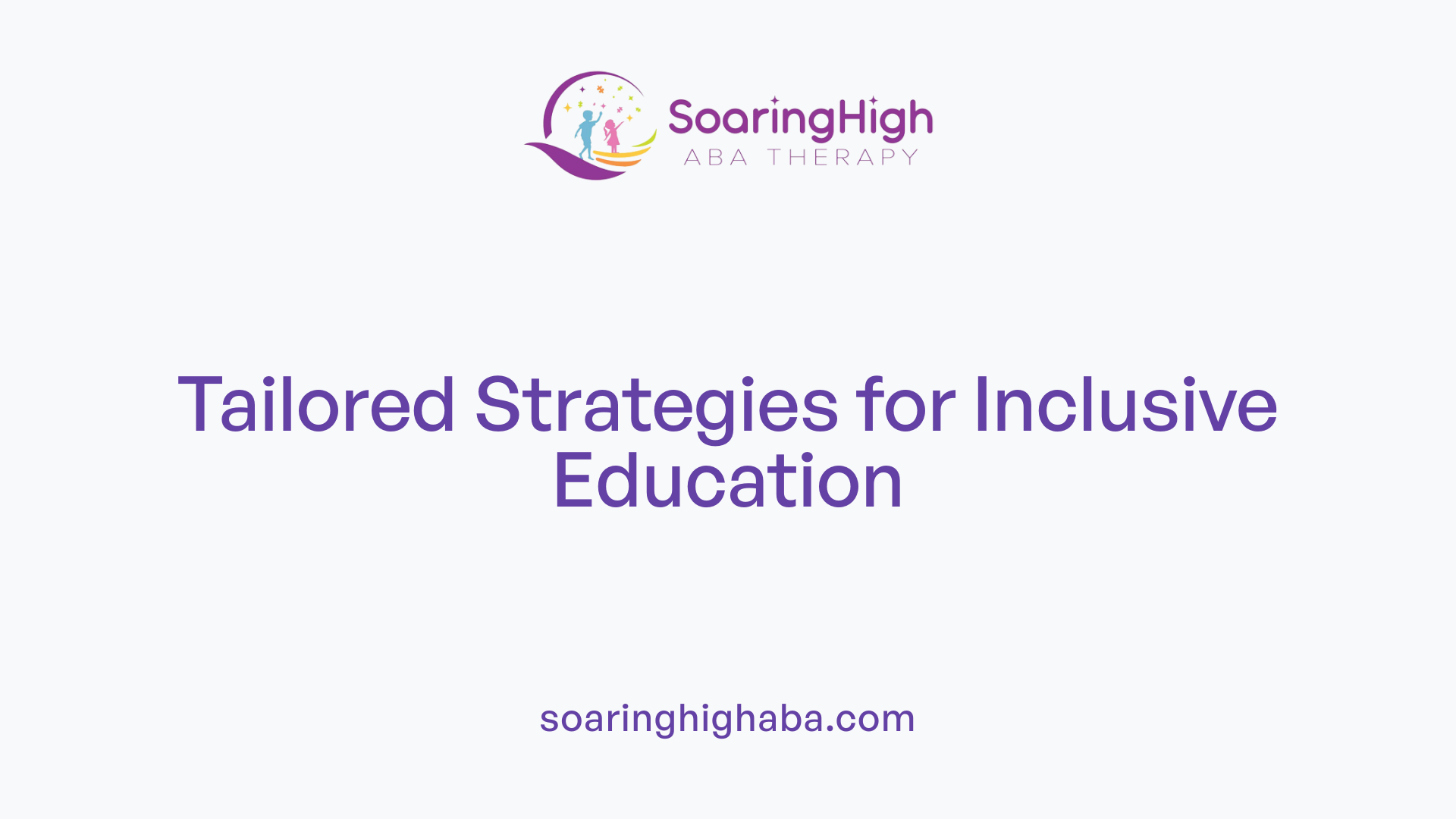
How can ABA therapy support children with autism in inclusive classrooms?
ABA (Applied Behavior Analysis) provides tailored strategies that help children with autism thrive in inclusive educational settings. One of its primary strengths is the creation of individual behavior plans that focus on each child's unique strengths and challenges. Teachers and behavior analysts assess these areas carefully to develop effective support strategies.
Using systematic data collection and analysis, educators monitor each child's progress closely. This ongoing process allows for real-time adjustments to teaching methods and intervention plans, ensuring that support remains targeted and effective.
ABA strategies such as visual supports, positive reinforcement, and structured routines are incorporated into daily classroom activities. These methods make learning more accessible and engaging for children with autism, addressing common difficulties like motivation and understanding classroom expectations.
Moreover, collaboration among teachers, parents, and ABA specialists ensures consistency and consistency in applying these interventions. Such coordinated efforts help reinforce skills across different settings, making generalization and maintenance of improvements more likely.
By focusing on social skills, communication, and behavior management, ABA equips children with the tools needed for academic success and social participation. This promotes independence and fosters positive peer interactions, creating a more inclusive environment that supports all learners.
| Step in ABA Support | Description | Outcome |
|---|---|---|
| Assessment of strengths and weaknesses | Identifying individual skills and challenges | Customized planning |
| Development of behavior plans | Creating personalized strategies for behavior change | Targeted support |
| Data collection and analysis | Tracking progress through systematic recording | Informed adjustments |
Implementing these individualized, data-driven practices ensures that children with autism receive the specific, consistent support they need to succeed socially and academically within inclusive classrooms.
Effective ABA Techniques for Classroom Integration

What strategies and methods are used to implement ABA therapy in inclusive classrooms?
Implementing ABA therapy in inclusive classrooms involves applying structured, evidence-based practices to support children with autism and other developmental challenges. Teachers and specialists often utilize methods such as Discrete Trial Teaching (DTT), Naturalistic Teaching, Pivotal Response Treatment (PRT), and token economy systems. These approaches focus on systematically promoting skill acquisition and decreasing challenging behaviors.
In addition to these techniques, classroom strategies include visual supports and schedules to help children understand daily routines and expectations. Visual cues, social stories, and visual cues aid children in transitioning smoothly between activities and understanding classroom rules. Environmental modifications—like seating arrangements and preferred activity stations—create a predictable, engaging environment that encourages participation.
Data collection is a fundamental part of ABA implementation. Teachers often gather ABC (Antecedent-Behavior-Consequence) data to analyze behavior functions and track progress continuously. This data informs necessary adjustments in intervention strategies, ensuring the interventions are effective and individualized.
Successful integration also relies on proper training and collaboration with ABA specialists. Educators and support staff work together to develop and implement personalized behavior plans, emphasizing positive reinforcement, skill generalization, and social interaction. By embedding ABA techniques into daily classroom routines, teachers foster an inclusive setting that promotes social, communication, and academic growth for all students.
How do visual supports, prompting, and data collection contribute to successful ABA implementation?
Visual supports such as schedules, social stories, and cues provide clarity and structure, helping children with autism navigate their day with less anxiety. Prompting and fading techniques are used to encourage independent responses; prompts are gradually reduced as the child's skills increase, fostering autonomy.
Data collection methods, including recording behaviors and responses, are vital for understanding how interventions are working. Teachers monitor progress through consistent data tracking, which guides decision-making and helps tailor interventions for each child's needs.
What is the role of collaboration and training in applying ABA in classrooms?
Collaboration between teachers, ABA therapists, and caregivers ensures that strategies are consistent across environments. Training school staff in ABA principles and techniques enhances their ability to implement interventions effectively. This teamwork creates a supportive, respectful atmosphere conducive to learning and development.
In summary, combining structured strategies such as DTT, visual supports, prompt fading, data monitoring, and collaborative planning optimizes ABA's impact within inclusive classrooms. These approaches not only improve behavioral and academic outcomes but also promote a positive, inclusive environment where all children can thrive.
Enhancing Engagement and Learning Outcomes
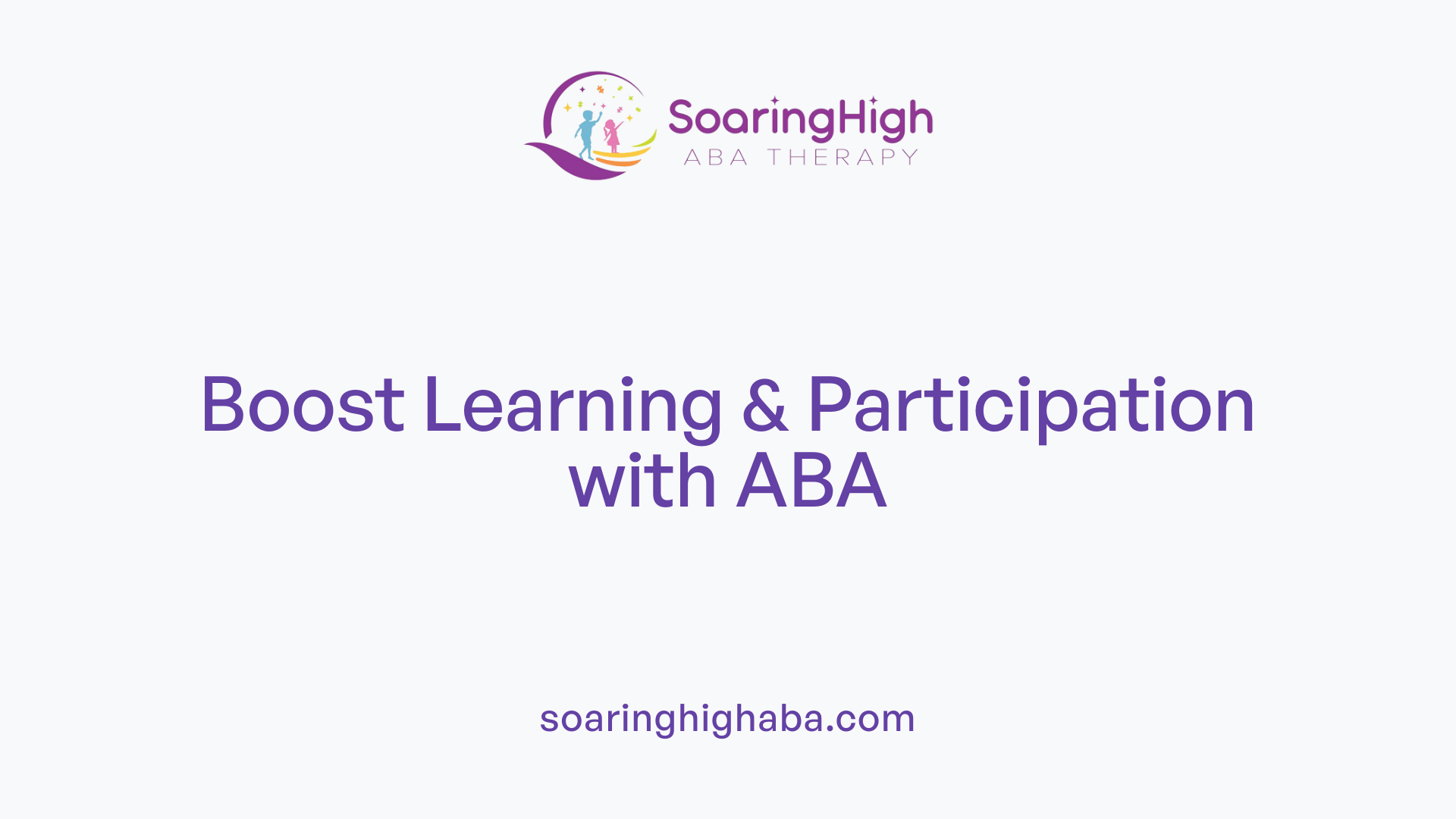
How does ABA therapy enhance engagement and academic success for children with autism in inclusive settings?
ABA therapy plays a vital role in increasing participation and achievement among children with autism in inclusive classrooms. One of its primary methods involves designing play-based activities that are both fun and motivating for children. This approach harnesses the natural interests of children to foster engagement and learning.
Techniques like positive reinforcement, visual supports, and modeling are key tools within ABA. These strategies help children develop essential social, communication, and motor skills within meaningful and functional contexts. For example, using visual cues or social stories can clarify expectations and ease transitions, making the learning environment more accessible.
Involving parents and caregivers is crucial to the success of ABA strategies. Their participation ensures that skills learned at school are reinforced at home and in other settings, supporting a consistent and comprehensive skill development process.
Additionally, ABA therapy emphasizes personalized and flexible teaching methods. Individualized sessions are crafted to meet each child’s specific needs, preferences, and developmental level. This tailored approach helps in addressing unique behavioral challenges, increasing motivation, and promoting independence.
These combined efforts—motivating activities, individualized plans, and family involvement—lead to significant improvements. Children become more socially engaged, display fewer behavioral issues, and develop skills that help them actively participate in classroom activities.
Overall, ABA creates a supportive environment that enhances engagement and provides children with autism the tools to succeed academically and socially in inclusive settings.
Positive Outcomes of ABA in Social and Developmental Domains
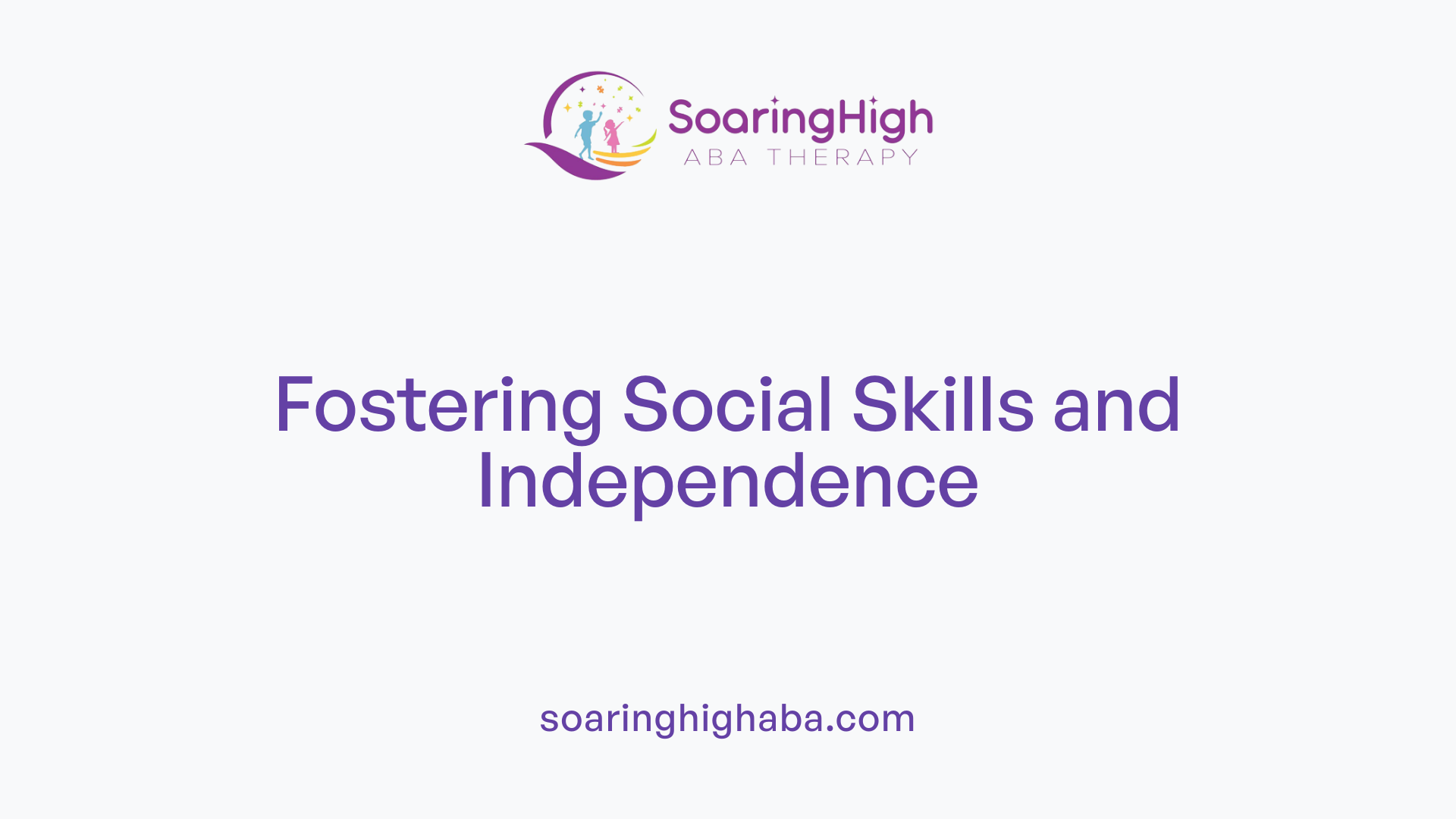
What is the impact of ABA therapy on social and developmental outcomes in inclusive educational environments?
Applied Behavior Analysis (ABA) has proven to be highly effective in promoting positive changes in children with autism, especially within inclusive classrooms. Through targeted strategies, ABA significantly enhances social skills, such as turn-taking, sharing, and initiating interactions. These improvements help children build meaningful relationships and participate more comfortably with their peers.
In the realm of communication, ABA helps develop both verbal and non-verbal skills, including the use of speech, sign language, or communication devices. As a result, children become better at expressing their needs and understanding others, which greatly contributes to their social inclusion.
Daily living skills are another vital area impacted by ABA. Techniques such as task analysis and reinforcement teach children life skills like dressing, eating, problem-solving, and self-regulation. These skills foster independence, allowing children to engage more confidently in everyday activities and social contexts.
Behavioral challenges, common among children with autism, are often reduced through ABA interventions. By using reinforcement, social stories, and sensory regulation strategies, ABA helps in managing challenging behaviors, leading to a more positive classroom environment.
Research supports that early and sustained ABA interventions lead to measurable gains in adaptive behavior and social functioning. For children with more severe impairments, these improvements can be life-changing, promoting greater school participation and societal engagement.
Overall, ABA’s structured, evidence-based approach facilitates comprehensive developmental progress. It encourages social competence, enhances communication, fosters independence, and reduces problematic behaviors, making it a fundamental component in supporting children with autism in inclusive education settings.
| Domain | Improvements | Supporting Strategies |
|---|---|---|
| Social Skills | Better peer interactions, initiating contacts | Peer-mediated interventions, modeling |
| Communication Abilities | Enhanced verbal/non-verbal communication | Visual supports, social stories |
| Daily Living Skills | Increased independence in routines | Task analysis, reinforcement |
| Challenging Behaviors | Reduced aggression, tantrums, self-injury | Positive reinforcement, sensory strategies |
This comprehensive approach ensures children with autism can thrive academically and socially in inclusive classrooms, leading to more successful and enriching educational experiences.
Creating a Supportive Classroom Environment
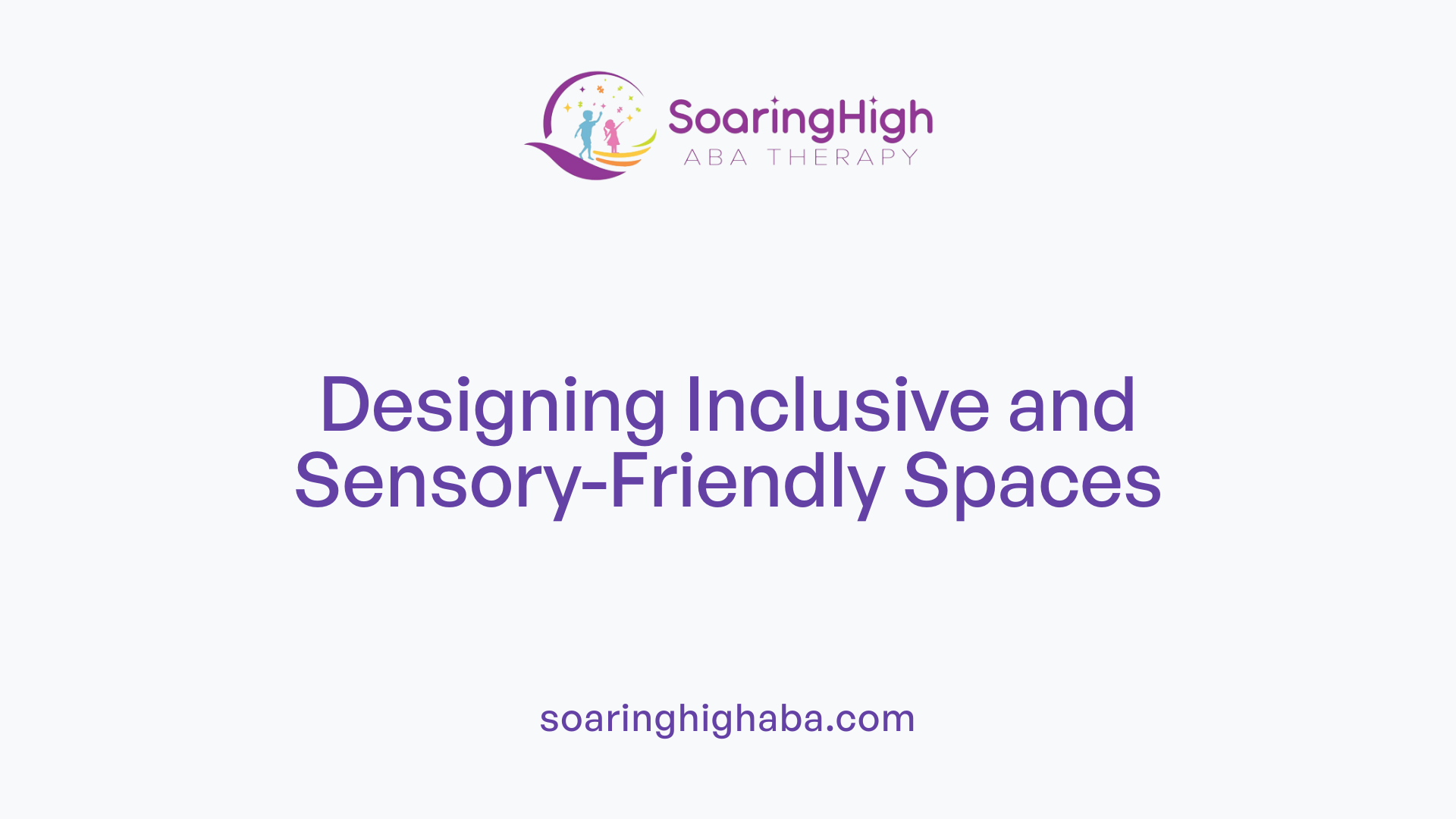
Consistent routines and structure
Implementing predictable routines helps children with autism feel secure and understand what to expect. Clear schedules and structured activities minimize confusion and promote engagement. Teachers can use visual schedules to outline daily activities, allowing students to anticipate transitions, reducing anxiety and behavioral issues.
Visual supports and environmental modifications
Visual supports such as social stories, visual cues, and charts assist children in understanding classroom expectations and procedures. These tools help in communication and self-regulation. Environmental modifications, like designated quiet areas or sensory-friendly spaces, enable children to self-manage sensory overloads and maintain focus.
Sensory considerations and sensory breaks
Providing sensory breaks is essential for children with autism to self-regulate. Adjustable sensory settings, sensory toys, or calming activities can be incorporated into daily routines. Recognizing sensory overload signs early allows teachers to facilitate breaks, helping students stay engaged and reduce disruptive behaviors.
Encouraging peer collaboration
Promoting interactions among peers fosters social skills and friendships. Structured collaborative activities and peer-mediated interventions teach sharing, turn-taking, and communication. These interactions not only support social development but also help children feel included and valued within the classroom community.
| Strategy | Purpose | Benefits |
|---|---|---|
| Visual Schedules | Clarify daily routines | Reduce anxiety and improve transitions |
| Sensory Areas | Support self-regulation | Enhance focus and reduce overload |
| Peer Collaboration | Foster social skills | Build friendships and social competence |
| Consistent Routines | Create predictability | Increase engagement and independence |
Collaborative Approach for Maximizing Outcomes
Teacher and therapist collaboration
Effective implementation of ABA in inclusive education depends heavily on the close cooperation between teachers and therapists. These professionals work together to develop, monitor, and adjust individualized strategies that support each child's unique needs. Regular communication ensures that teaching methods align with therapeutic goals, creating a consistent learning environment.
Family engagement and communication
Families play a crucial role in reinforcing ABA strategies beyond the classroom. Open channels of communication between families and educators promote consistency and provide valuable insights into the child's progress and challenges. Family involvement ensures that support continues at home, enhancing skill development and generalization.
Use of individualized education plans (IEPs)
IEPs outline tailored goals covering academic, social, and behavioral domains for children with autism. These plans guide educators and therapists in applying specific ABA techniques suited to each child's needs. Regular review and updates of IEPs foster adaptive strategies, maximizing the child's potential for success in inclusive settings.
The Future of ABA in Inclusive Education
The future of Applied Behavior Analysis (ABA) in schools looks promising, with efforts focused on broadening access and improving implementation. Increasing the number of trained ABA professionals is a priority, enabling more schools to integrate this approach effectively for children with autism and other developmental challenges.
One significant development is the movement toward embedding ABA techniques directly into mainstream curricula. This integration helps create inclusive environments where all students can benefit from strategies such as visual supports, positive reinforcement, and structured routines. By doing so, ABA can support students’ social, communication, and academic skills more seamlessly.
Additionally, expanding research continues to strengthen the foundation of ABA practices in education. Ongoing studies explore innovative methods, adapt strategies for different behavioral needs, and verify the effectiveness of evidence-based interventions. This growth helps schools tailor approaches more precisely to individual students’ strengths and challenges.
As awareness and expertise increase, schools will better understand how to make ABA accessible and effective, fostering inclusive classrooms that support every child's development and participation.
Fostering Inclusion and Developmental Growth
ABA therapy represents a powerful tool in creating inclusive classrooms where children with autism can develop essential skills, participate meaningfully, and achieve their full potential. Its evidence-based strategies, when implemented through collaboration among educators, therapists, and families, enhance social, communicative, and behavioral outcomes. As research advances and accessibility improves, ABA’s role in supporting inclusive education will continue to expand, ensuring a more equitable and supportive learning environment for all students.
References
- ABA Inclusive Education: Revolutionizing Learning for All - AutismCOE
- Increasing engagement in students with autism in inclusion ...
- ABA in Schools & the Classroom: The Key to Inclusive Education
- Can ABA Therapy Replace School for Autistic Children? - All Star ABA
- Bringing ABA into Your Inclusive Classroom - Brookes Publishing
- Creating Inclusive Classrooms for Kids With Autism - Beyond Behavior
- How to Use ABA in the Classroom



























































































